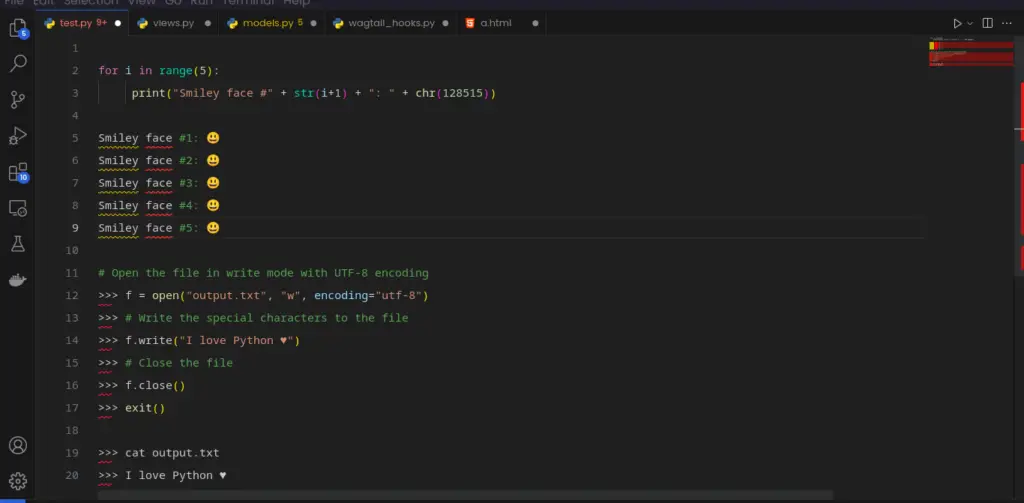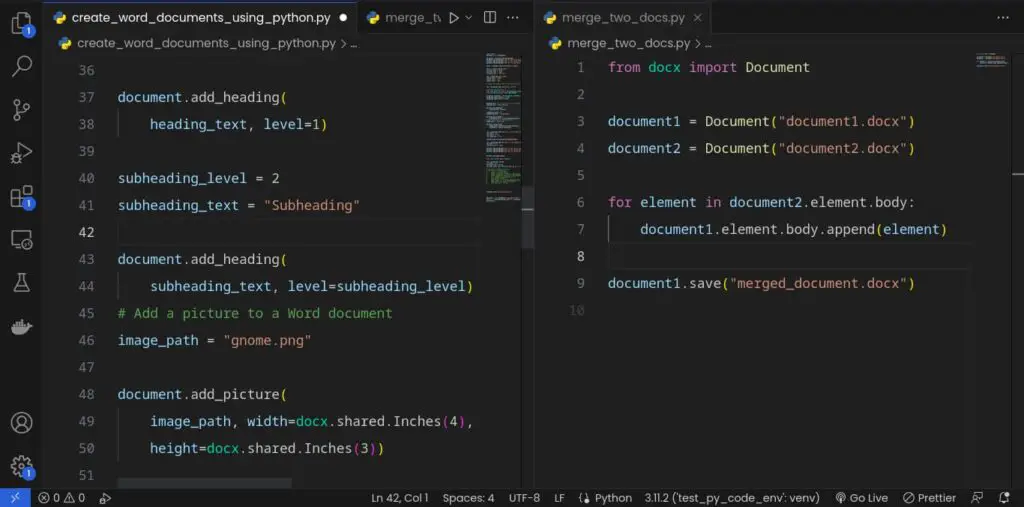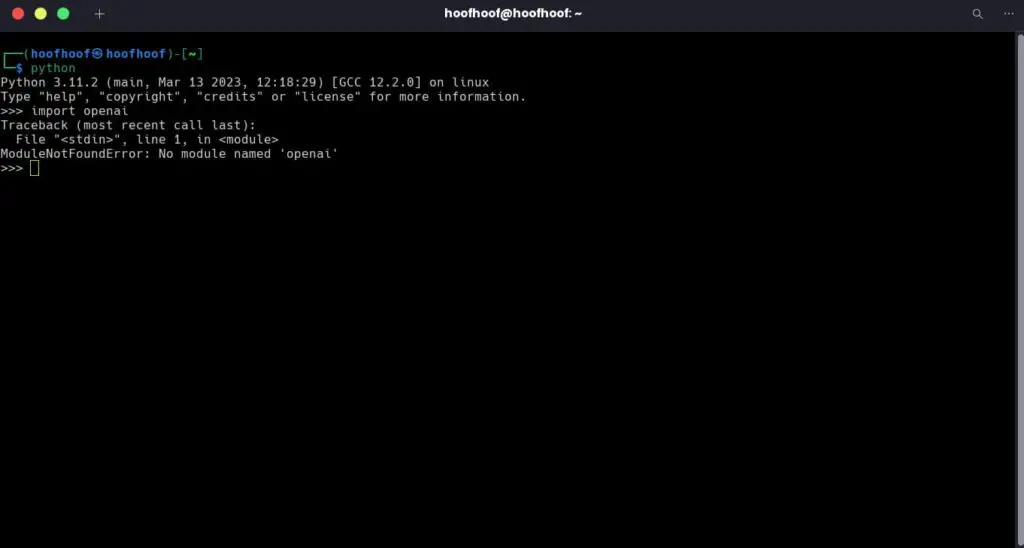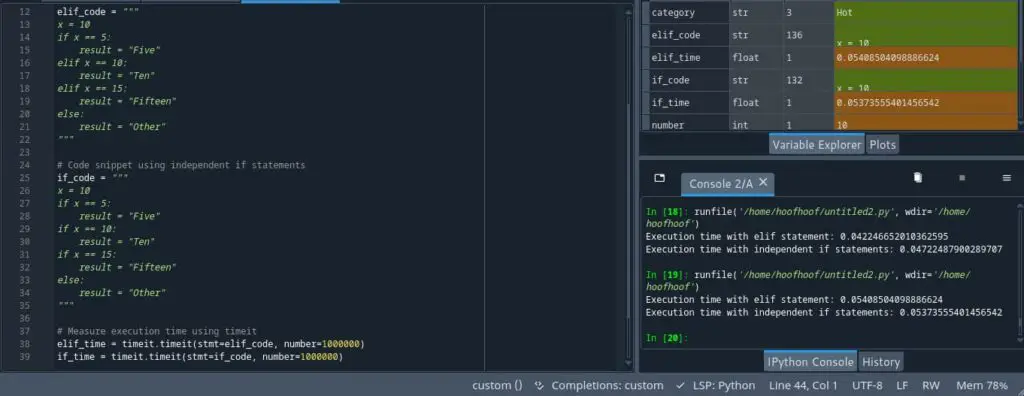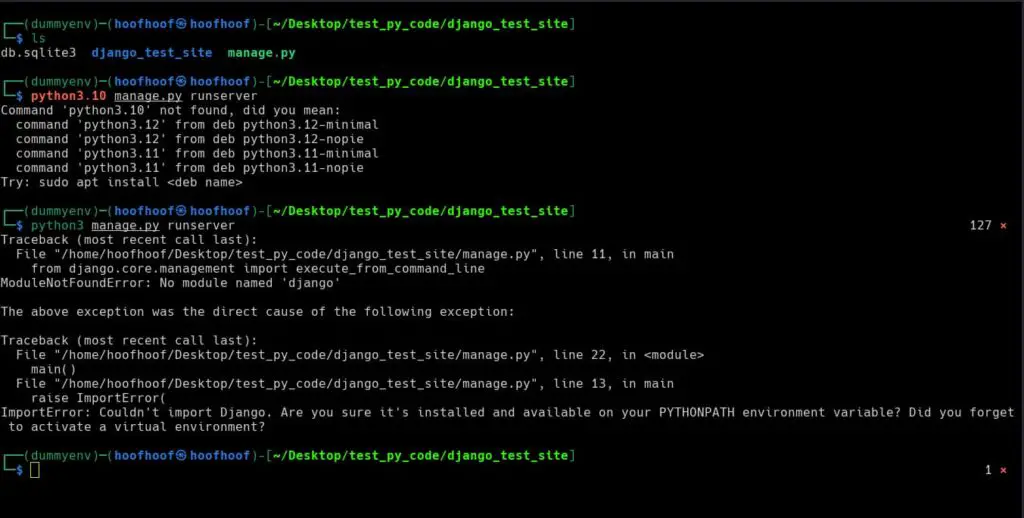Rounding numbers is a fundamental concept in programming that allows us to simplify values while maintaining a desired level of precision.
Python, a widely-used programming language known for its simplicity and versatility, follows a specific rounding rule known as the “rounding-to-even” rule, which is also referred to as “round half to even.”
This rule dictates that when a number is exactly halfway between two possible rounding outcomes, Python rounds to the nearest even number.
Python rounds 2.5 to 2 and 0.5 to 0 because of the rounding-to-even rule.
Let’s look at what rounding is then explore the rounding-to-even rule.
What is rounding in Python programming?
Rounding is a fundamental mathematical operation used to simplify numbers to a desired level of precision.
In the context of Python programming, rounding plays a crucial role in various numerical computations.
It allows us to obtain more manageable values without sacrificing essential information.
To put it simply, rounding involves adjusting a number to the nearest whole number, a specific decimal place, or a significant figure.
This adjustment is based on predefined rules or algorithms that determine the rounding outcome.
Python provides built-in functions and mechanisms to perform rounding operations conveniently.
The purpose of rounding numbers in programming is multifaceted.
Let’s explore some key reasons why rounding is essential.
Why rounding is needed?
- Simplification of Numbers: Rounding enables us to work with more concise and manageable numbers, especially when dealing with complex calculations or large datasets. It helps avoid unwieldy decimal places that may not be necessary or relevant for a given context.
- Enhancement of Readability: Rounding allows us to present numbers in a more reader-friendly format. Displaying excessively long decimal values can be cumbersome and may not provide significant additional information to the user. By rounding numbers, we can improve the readability of results and make them easier to comprehend.
- Error Mitigation: In certain scenarios, performing calculations with precise decimal values can lead to accumulation of small errors due to limitations in floating-point arithmetic. Rounding helps mitigate these errors by providing a level of tolerance and reducing the impact of minor computational inaccuracies.
And how do you round results of a calculation in Python?
You use the built-in round() function in Python to round the results of calculations.
The round() function is a powerful tool that allows you to round numbers with precision and control over the desired outcome.
By employing this function, you can ensure that your calculations produce values that align with your specific rounding requirements.
But first,
What is round() function in Python?
The round() function in Python is a built-in function specifically designed for rounding numbers.
It provides a straightforward and efficient way to perform rounding operations on numerical values.
Understanding the syntax and common usage of the round() function is essential for harnessing its power in your Python programs.
The round() function follows a simple syntax: round(number, ndigits).
Here’s what each part represents:
- number: This parameter specifies the number you want to round. It can be an integer, a float, or even a mathematical expression that evaluates to a numeric value.
- ndigits: This optional parameter dictates the precision of the rounding. It determines the number of decimal places to which the result should be rounded. If omitted,
ndigitsdefaults to 0, resulting in rounding to the nearest whole number.
Common usage of the round() function
The round() function can be used in various ways, depending on your specific requirements.
Here are some common scenarios where the round() function proves valuable:
- Rounding to a Specific Decimal Place: By specifying a positive value for
ndigits, you can round a number to a specific decimal place. For example,round(3.14159, 2)would round the number π (pi) to two decimal places, resulting in 3.14. - Rounding to the Nearest Whole Number: If you omit the
ndigitsparameter or pass 0, theround()function will round the number to the nearest whole number. For instance,round(5.7)would round 5.7 to 6, andround(9.2)would round 9.2 to 9. - Rounding to Negative
ndigits: Interestingly, using a negative value forndigitswill round the number to the nearest power of 10. For example,round(835, -2)would round 835 to the nearest hundred, resulting in 800.
But still,
Python rounding is weird?
When it comes to rounding, Python may seem a bit peculiar, especially when compared to traditional mathematics.
In mathematics, rounding involves rounding up numbers that are equal to or greater than 0.5 and rounding down numbers that are less than 0.5.
So, in maths, 2.5 rounds up to 3 and 5.5 rounds up to 6.
However, Python follows a different rounding rule that can sometimes catch beginners off guard.
Python’s unique approach to rounding
In Python, when a number is exactly halfway between two possible rounding outcomes, it follows the “rounding-to-even” rule.
This means that Python rounds to the nearest even number.
This rule is also known as “round half to even” or “banker’s rounding.”
Rounding 2.5:
- Normal mathematics: Since 2.5 is exactly halfway between 2 and 3, it is typically rounded up to 3.
- Python’s rounding: In Python, 2.5 is rounded down to the nearest even number, which is 2.
Rounding 1.5:
- Normal mathematics: Again, 1.5 is exactly halfway between 1 and 2, so it is typically rounded up to 2.
- Python’s rounding: Python rounds 1.5 down to the nearest even number, which is 2.
Weird, right?
As demonstrated in these examples, Python’s rounding behavior may differ from what we intuitively expect based on normal mathematical rules.
It is important to keep this distinction in mind when working with decimal numbers in Python.
What is round-to-even rouding method in Python?
In Python, the round-to-even rounding method, also known as the “round half to even” rule, is the default behavior employed by the round() function.
Understanding this rounding method is crucial to comprehend why Python rounds 2.5 to 2 and 0.5 to 0.
Let’s delve into the details of this rule and its implications.
The round-to-even rule follows a simple principle: when a number falls exactly midway between two possible rounding outcomes, Python rounds to the nearest even number.
This approach ensures a balanced distribution of rounding errors over a series of rounding operations, which can lead to more accurate statistical results.
To illustrate the round-to-even rule, consider the following examples:
Example 1:
print(round(2.5))The output:
2In this case, Python rounds 2.5 to 2 because 2 is the nearest even number.
Although 2.5 is closer to 3, the round-to-even rule dictates that when a number is exactly halfway between two possibilities, the even option is chosen.
Example 2:
print(round(3.5))The output of the code example above:
4Here, Python rounds 3.5 to 4 because 4 is the nearest even number.
Similarly to the previous example, 3.5 is closer to 4, and according to the round-to-even rule, the even option is selected.
The round-to-even rule is not limited to positive numbers; it applies to negative numbers as well.
Consider the following example:
Example 3:
print(round(-2.5))The output:
-2In this case, Python rounds -2.5 to -2 because -2 is the nearest even number.
The round-to-even rule is consistent, regardless of the sign of the number being rounded.
The round-to-even rounding method, with its focus on achieving statistical balance, ensures a fair and predictable outcome when rounding numbers in Python.
By adhering to this rule, Python maintains consistency and reduces bias in rounding operations.
So,
Why does 0.5 round to 0 in Python?
In Python, 0.5 rounds to 0 due to the implementation of the round-to-even rounding method, also known as the “round half to even” rule.
This rule dictates that when a number is exactly halfway between two possible rounding outcomes, Python chooses the nearest even number.
Since 0.5 falls midway between 0 and 1, the round-to-even rule determines that the nearest even number is 0.
Therefore, Python rounds 0.5 to 0, ensuring consistency and fairness in rounding calculations.
Why does Python round 2.5 round to 2?
Python rounds 2.5 to 2 because of the round-to-even rounding method it follows.
When rounding 2.5 in Python, the expected result is 2.
This outcome may seem counterintuitive at first, as one might expect 2.5 to be rounded up to 3.
However, Python follows the round-to-even rule, which determines the rounding outcome when a number is exactly midway between two possibilities.
In this case, 2.5 is exactly halfway between 2 and 3.
According to the round-to-even rule, Python chooses the nearest even number as the rounded result.
Both 2 and 3 are equidistant from 2.5, but since 2 is an even number, it is selected as the rounded value.
The rationale behind the round-to-even rule is to achieve statistical balance and reduce bias in rounding operations.
By selecting the nearest even number, Python ensures a fair distribution of rounding errors over a series of calculations.
This approach prevents systematic biases that could potentially arise if numbers were consistently rounded up or down.
The round-to-even rule aligns with statistical principles and is particularly useful in scenarios where rounding occurs frequently or in large datasets.
It helps maintain consistency and accuracy in rounding computations, enabling more reliable results in statistical analyses and calculations.
So, in summary, Python rounds 2.5 to 2 because it follows the round-to-even rule, selecting the nearest even number when a value is precisely halfway between two possible rounding outcomes.
This approach promotes statistical balance and mitigates biases, contributing to more accurate and fair rounding results.
FAQs
Why doesn’t Python round 2.5 to 3 and 0.5 to 1?
Python doesn’t round 2.5 to 3 and 0.5 to 1 because it follows the round-to-even rule. This rule dictates that when a number is exactly halfway between two possible rounding outcomes, Python chooses the nearest even number. This promotes statistical balance and accuracy in rounding calculations.
Conclusion
- Summarize the key points discussed throughout the article.
- Reiterate the reason behind Python rounding 2.5 to 2 and 0.5 to 0.
- Emphasize the importance of understanding Python’s rounding behavior for accurate computations.
In conclusion, we have explored the intricacies of rounding in Python and shed light on why Python rounds 2.5 to 2 and 0.5 to 0.
The key takeaway is that Python adheres to the round-to-even rule, selecting the nearest even number when a value is precisely halfway between two rounding possibilities.
This rule ensures statistical balance, reduces bias, and promotes accurate computations.
Understanding Python’s rounding behavior is essential for achieving precise and reliable results in numerical calculations.
By grasping the round-to-even rule, developers can anticipate Python’s rounding outcomes and avoid potential pitfalls.
It empowers us to write code that aligns with Python’s specific behavior, resulting in accurate computations and preventing unexpected results.
In the realm of programming, where precision and accuracy are paramount, being cognizant of Python’s rounding behavior is a vital aspect of writing robust code.
By embracing this knowledge, we equip ourselves with the tools to perform accurate calculations, avoid common rounding misconceptions, and ensure our programs deliver reliable results.
So, as you embark on your programming journey, remember the significance of understanding Python’s rounding behavior.
With this knowledge in hand, you can confidently harness the power of rounding in Python and unlock the full potential of your numerical computations.
Create, inspire, repeat!

